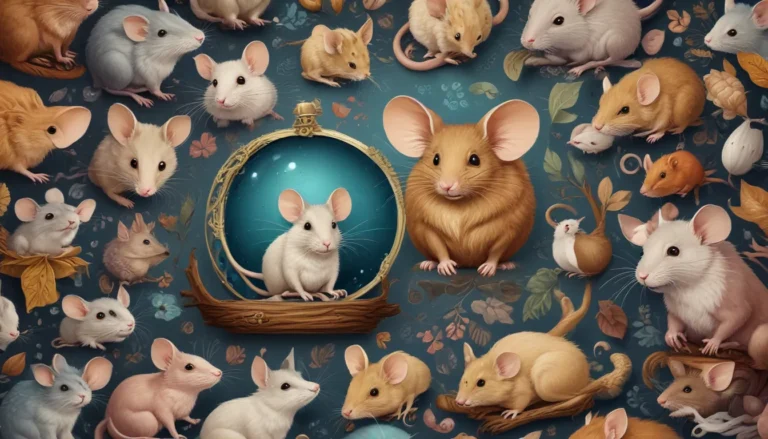The pictures we use in our articles might not show exactly what the words say. We choose these pictures to make you interested in reading more. The pictures work together with the words but don’t take their place. The words still tell you the important facts.
Labradoodles, the delightful crossbreed resulting from a Labrador Retriever and a Poodle, have enchanted pet enthusiasts with their charming curly coats and amiable personalities. As these lovable pups continue to captivate hearts worldwide, there's a treasure trove of fascinating facts waiting to be uncovered. Whether you're a current Labradoodle owner or contemplating welcoming one into your family, this article is your guide to exploring the unique world of Labradoodles. From their origins and defining traits to their care requirements and health benefits, we invite you to join us on a journey through 10 enthralling facts about these remarkable hybrid breeds.
A Blend of Brilliance and Playfulness
- Labradoodles are a distinctive combination of intelligence and playfulness, making them ideal companions for families of all kinds. Their hypoallergenic coat, available in various sizes, caters to different households, but they do require consistent grooming and exercise.
Unraveling the Origins
Labradoodles trace their lineage back to a blend of Labrador Retrievers and Poodles. This unique mix marries the trainability and cleverness of Poodles with the affable and fun-loving nature of Labradors, resulting in a harmonious balance of traits sought after in family pets.
The Hypoallergenic Advantage
One of the standout features of Labradoodles is their hypoallergenic coat. With minimal shedding, Labradoodles are an excellent choice for individuals with allergies or asthma, allowing them to enjoy the companionship of a furry friend without triggering allergic reactions.
Embracing Diversity in Size
Labradoodles showcase a diverse range of sizes to suit different preferences. From standard Labradoodles measuring around 21 to 24 inches tall, to miniature versions standing at 14 to 16 inches, and even toy Labradoodles in smaller variations, these furry companions come in a size for every home.
Social Butterflies of the Canine World
Known for their sociable and gentle demeanor, Labradoodles excel as family pets, easily bonding with children and other household animals. Their outgoing nature and adaptability make them an excellent addition to any family dynamic.
Versatile Working Canines
Labradoodles are more than just household pets; they are versatile working dogs with a knack for excelling in various roles. Whether as therapy dogs offering comfort, guide dogs aiding the visually impaired, or search and rescue dogs delivering vital assistance, Labradoodles showcase their intelligence and compassion in diverse settings.
A Rainbow of Coats
Diverse in both texture and color, Labradoodles boast a stunning coat range that can be curly, wavy, or straight, in hues spanning from chocolate and black to cream and apricot. Their striking appearance adds an extra layer of charm to their already endearing personalities.
Grooming Essentials
Owning a Labradoodle comes with the responsibility of regular grooming to maintain their coat in prime condition. With their unique fur texture, a combination of brushing and professional grooming is essential to prevent matting and ensure their coat remains healthy and vibrant.
Intelligence at Its Finest
Labradoodles are renowned for their high level of intelligence and trainability. They excel in obedience training, quickly picking up new commands and tricks with enthusiasm. Their sharp minds make them a joy to train and interact with, fostering a strong bond between owners and pets.
A Burst of Energy
To keep Labradoodles content and well-adjusted, regular exercise and mental stimulation are imperative. Their high energy levels require daily activities, such as walks, playtime, and engaging challenges, to prevent boredom and maintain their overall well-being.
The Rise of a Beloved Breed
In recent years, Labradoodles have surged in popularity as sought-after family pets, thanks to their lovable demeanor, versatility, and hypoallergenic coat. Their endearing personalities and adaptability to various living environments have made Labradoodles a favorite choice for households of all shapes and sizes.
Exploring the Enchanting World of Labradoodles
Labradoodles stand as a testament to the magic that unfolds when two remarkable breeds come together. Their blend of intelligence, affection, and hypoallergenic qualities makes them a delightful addition to any family. Whether you're contemplating bringing a Labradoodle into your life or simply seeking to delve into the wonders of this captivating breed, these 10 fun facts about Labradoodles offer a glimpse into their exceptional characteristics.
Frequently Asked Questions
- What is a Labradoodle?
-
A Labradoodle is a crossbreed dog resulting from the mix of a Labrador Retriever and a Poodle, bred initially in the late 1980s to create guide dogs with hypoallergenic coats.
-
Are Labradoodles hypoallergenic?
-
Labradoodles are classified as hypoallergenic due to their minimal allergen production compared to other breeds. However, individual reactions can vary, so it's advisable to spend time with a Labradoodle before committing if you have allergies.
-
How big do Labradoodles get?
-
Labradoodles can vary in size based on their parentage, ranging from small (around 15 inches in height) to as large as standard Poodles (up to 24 inches), with weight spanning from 15 to 65 pounds.
-
How much exercise do Labradoodles need?
-
Labradoodles are an active breed requiring around 30-60 minutes of daily exercise to stay healthy and happy. Activities can include walks, playtime, and mental stimulation to keep them engaged.
-
Do Labradoodles shed?
-
Labradoodles typically have a low to non-shedding coat, making them popular among individuals with allergies. However, variations in coat type may lead to slight differences in shedding levels.
-
Are Labradoodles good with children?
-
Known for their friendly and playful nature, Labradoodles are generally well-suited for interactions with children. Proper supervision and socialization are key to fostering positive and safe relationships between Labradoodles and children.
-
Are Labradoodles easy to train?
-
Labradoodles are intelligent and responsive to positive reinforcement techniques, making them relatively easy to train. Their eagerness to please and love for learning new commands make training an enjoyable experience for both owner and pet.
-
How long do Labradoodles live?
-
The average lifespan of a Labradoodle ranges from 12 to 15 years with proper care, regular vet check-ups, and a healthy lifestyle contributing to a long and joyful life for these beloved companions.
-
Do Labradoodles have any common health issues?
-
While generally healthy, Labradoodles may inherit some health concerns prevalent in their parent breeds, such as hip dysplasia, eye conditions, and allergies. Regular veterinary visits and a balanced diet play a crucial role in preventing potential health issues.
-
Are Labradoodles good therapy dogs?
- Labradoodles possess a gentle and empathetic nature suitable for serving as therapy dogs, offering comfort and support in various settings. Their blend of intelligence and compassion enhances their ability to connect with individuals in need, making them valuable assets in therapeutic environments.
We strive to deliver reliable and captivating content, sourced directly from real users like you, showcasing a wealth of diverse insights and information. Our dedicated editors meticulously review each submission to maintain the highest standards of accuracy and reliability. Through this commitment to quality and authenticity, we invite you to explore and learn alongside us, trusting in the wealth of knowledge and truth we bring to each shared fact.






